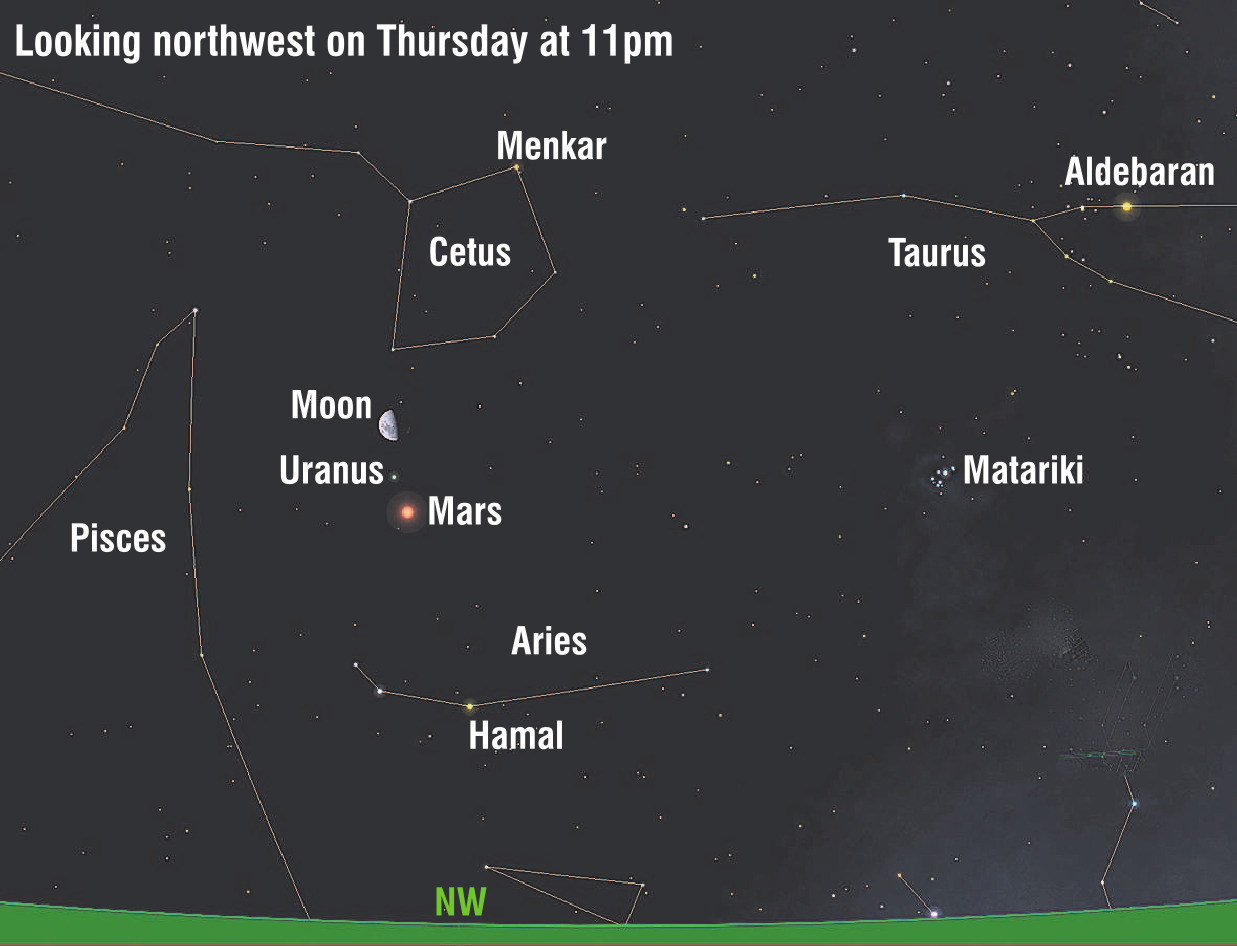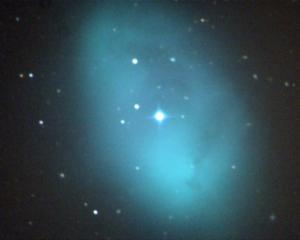

On Thursday, the moon will be in the constellation of Aries, the Ram. Aries is one of the 12 classical constellations of the zodiac. To be entirely honest, Aries isn’t a particularly easy constellation to make out. It is little more than a line of unremarkable and, frankly, fairly dim stars.
The brightest star in the constellation is orange-coloured Hamal (meaning the sheep’s head). Hamal is 65 light-years from the sun, meaning that the light hitting your eyes when you look at it began its celestial journey in the same year Elvis Presley released Heartbreak Hotel.
What Aries lacks in stars, it more than makes up for with planets. At the moment, both Mars and Uranus are passing through the constellation.
On Thursday, Mars will be a bright red star about four degrees below the moon. The red planet is just over 160 million kilometres away, which is 400 times further from us than the moon.
Uranus appears as a dim and distinctly green-coloured ‘‘star’’ halfway between the Moon and Mars. If you have excellent eyesight, you might be able to spot it.
However, Uranus is very dim, and the bright moonlight will make it harder to see. The best bet is to use a pair of binoculars, which will easily pick up the solar system’s seventh planet.
This week Uranus is a smidgeon under 3 billion kilometres from the sun. Travelling at a speed of 300,000km/sec, the reflected sunlight you see when looking at it has taken 163 minutes to cross the vast void separating our planet from Uranus.











